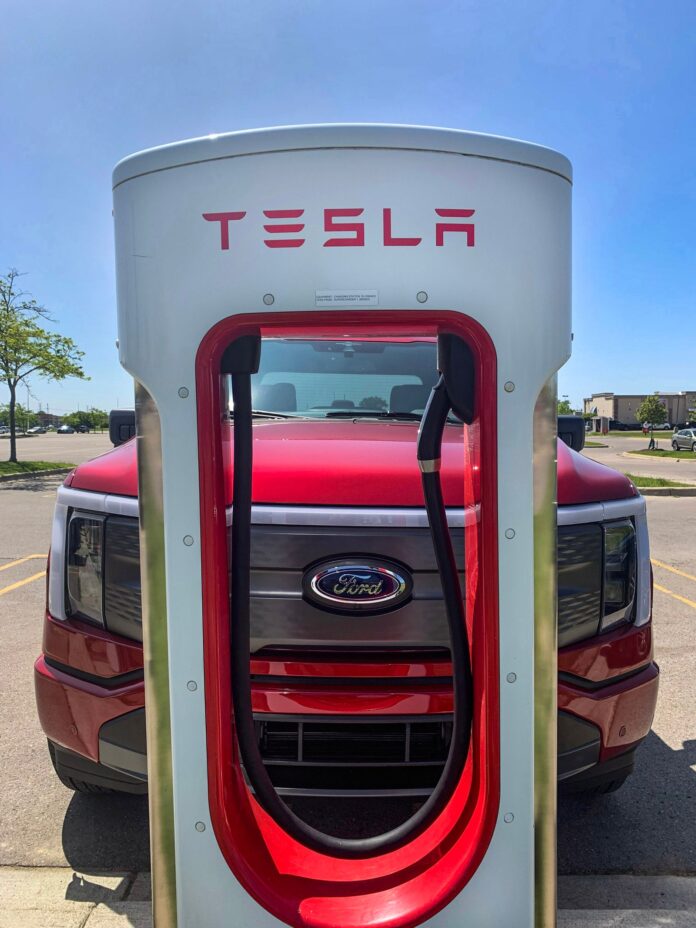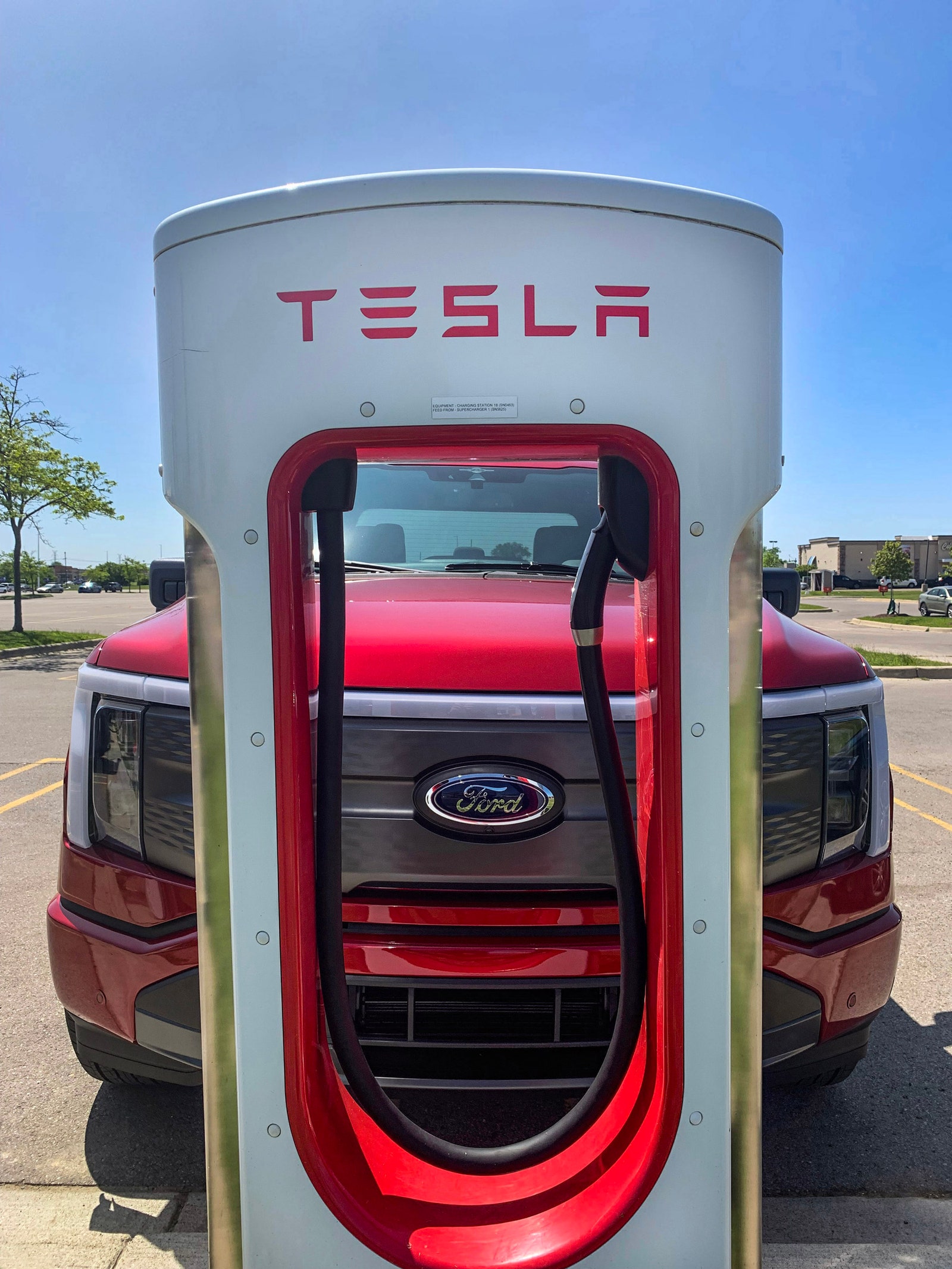Every six months, the automotive research company J. D. Power surveys some 5,000 US electric vehicle owners about their experiences driving their battery-powered cars. The latest edition of this survey, out this week, found that EV’s perennial bugbear is still bugbearing. In fact it has gotten worse: Drivers say they are even more dissatisfied with the availability of public charging stations than they were a year ago.
In North America, additional charging stations are on their way, thanks in part to a US federally funded program that seeks to get at least half a million more in the ground by 2030. But in this messy middle period, automakers have come up with another solution: Let Tesla take care of it.
Tesla has the most widespread and dependable charging network in the United States. (In fact, the new survey found that upscale EV drivers are more likely to be happy with public charging—and the majority of them drive Teslas.) It also has a unique charging plug, called the North American Charging Standard. Nearly every global automaker has now pledged to add that plug to its electric vehicles, allowing its drivers to tap into the Tesla charging network.
Ford piloted the “let Tesla take care of it” model last May, when it announced it would adopt that plug. Its EVs will come with the connector standard by 2025. And starting today, existing drivers of the Mach-E Mustang and Lightning pickup truck will get access to a hearty chunk of Tesla’s Supercharger network, courtesy of free adapters that they can order off a website that Ford just launched. The adapters will be gratis between now and July; after that, they’ll retail for $230, Ford says. The company expects the adapters to begin shipping in late March.
Ford regularly surveys its own drivers, and “their main pain points have to do with public charging,” said Ken Williams, the automaker’s director of charging and energy services, on a call with reporters this week. The adapter will give Ford drivers access to 15,000 new chargers, bringing the total up to 126,000 chargers and more than 28,000 fast chargers across the US and Canada. (That doesn’t include every charger in the Tesla network; Ford drivers won’t get access to older Tesla charging stations, and Tesla has reserved a select few newer ones for its drivers only.) Drivers will be able to access and pay to charge at the stations through Ford’s app.
Today, most electric car drivers don’t need regular access to public charging stations because they can plug in their cars at home overnight. But that won’t work for the car owners who don’t have their own garages, driveways, or specially equipped parking lots—or for drivers accustomed to long, multi-hundred-mile car trips.
Ford’s effort—and the effort of all other automakers that have pledged to shift to Tesla’s plug—should help, says Brent Gruber, who oversees the J. D. Power EV driver survey as the executive director of its electric vehicle practice. “With the opening up of the Supercharger network to non-Tesla vehicles, I expect that the satisfaction score for public charging availability will increase in the future,” he says.
The plug problem is predominantly an American one. In Europe, all EV makers use the same type of connector—even Tesla—and charging stations are both more numerous and more reliable than their US counterparts.
In US Tesla Supercharger stations, Ford drivers are just the first of a flood of new users. Now all three Detroit automakers (Ford, Stellantis, and General Motors), plus Volkswagen, Toyota, Hyundai, and others, have committed to using the plug.
Tesla also committed last year to building some charging stations that are accessible to drivers using other connectors. Meanwhile, the electric automaker is winning federal grant after grant to build more stations. According to reporting from Politico’s E&E News, it’s currently installing more chargers than any other company.
Source : Wired








